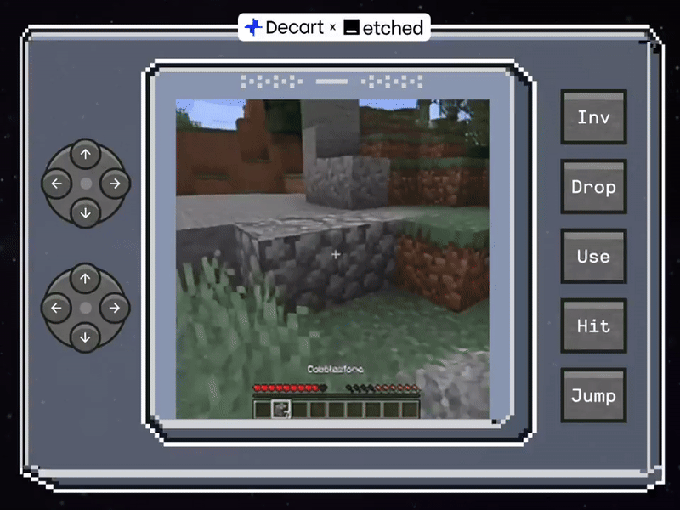Etched's Oasis: Creating a Market For Sohu
Etched dropped a huge announcement on Halloween. From Oasis: an interactive, explorable world model,
We're excited to release Oasis, the first playable AI model that generates open-world games. Unlike many AI video models, which generate video from text, Oasis generates video frame-by-frame from keyboard and mouse inputs. Oasis is the first model in a research partnership between Etched and Decart, a new AI lab focused on building new generative experiences.
Etched partnered with Decart to build Oasis, a real-time, interactive video model. The model can run in real-time (20fps) at low resolution (360p) on H100s, which took much innovation.
Etched made architectural improvements to enable next-frame prediction.
We ran hundreds of architectural and data experiments to identify the best architecture for fast autoregressive interactive video generation.
Unlike OpenAI’s Sora, which generates video from text in chunks of 60 seconds, Oasis generates one frame at a time. This makes Oasis highly steerable, letting users control generations with their input.
Oasis demonstrates physical understanding, allowing players to break blocks, build structures, and explore the game. As we scale future generations, we’re excited to explore multi-minute context lengths, deeper world models, and eventually, transition beyond gaming into full interactive multimodal video generation.
Though the model output was remarkable, its slow speed prevented real-time interaction. To address this issue, Etched collaborated with Decart, specialists in maximizing the performance of H100s. Decart's proprietary inference framework unlocked the real-time performance for users to engage with the model.
The result? A playable Minecraft demo.
Brilliant Strategy
This demo is simultaneously remarkable and not good enough. (This was the same feeling I had when I first used ChatGPT.)
I tried to play it, and I was number 444 in line with an estimated 15-minute wait time. Clearly, the amount of H100s these startups can afford to rent for this demo can only support a limited number of users. This H100 implementation must be expensive to scale, even in low resolution and with a small model.
On the other hand, with Sohu, Etched claims we can expect real-time high resolution (4K) and support more than an order of magnitude concurrent users.
If true, Etched has made a brilliant strategic series of moves:
Invent an amazing technology (playable AI model)
Demonstrate technical feasibility, but not economic viability, on state-of-the-art hardware
Launch an ASIC to make it usable and economically viable
Etched hasn’t completed step 3 yet but assures us it’s coming.
Creating A Market
Hardware startups often start with a solution and then try to find problems that the hardware can speed up—for example, Untether AI, Groq, Cerebras, and so on. Even Nvidia’s general-purpose GPUs had a long period of “Try our GPGPUs to speed up your existing oil & gas, finance, and scientific computing workloads.”
Etched’s Oasis demo showcases a different, better approach. Instead of asking, “What existing workloads can our hardware speed up?” Etched asks, “What future is only possible with our hardware?”
Oasis demonstrates precisely that. Real-time interactive video is a perfect example of a technology that’s only economically feasible with Sohu.
Yet Oasis is not a product; it’s a demonstration of technical feasibility. By creating Oasis and open-sourcing the weights for a smaller version of the model and its inference code, Etched has tipped its hand at a possible business strategy: create a market and sell enabling hardware to other product companies.
Future Customers
Oasis suggests a future of generative video and gaming. There’s a vast spectrum of future Sohu customers: streaming services like YouTube and Netflix, gaming companies like Electronic Arts and Epic Games, and social media stalwarts like Meta and TikTok.
At the same time, there’s a blue ocean of innovation opportunities for startups and existing companies alike. How might generative video enable personalized education? What does playable AI mean for AR/VR?
Of course, AI labs come to mind, too—what could AI labs do with data centers full of Sohu?
Taking Etched Seriously
Oasis is one of those demos that I’ll never forget where I was when I first saw it.
With Oasis, Etched answered the billion-dollar question for AI startups: How do you convince hyperscalers and cloud service providers to buy your system? After all, no one ever got fired for buying Nvidia.
Etched’s answer: showcase a technology that potential customers can’t afford on Nvidia.



